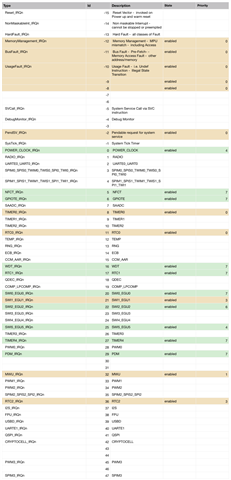Every once in a while I am experiencing the soft device error NRF_FAULT_ID_SD_ASSERT.
In this post I saw that you may be able to provide some information on what is going wrong inside the soft device by knowing the program counter address, when this error occurs.
The PC is at 0x0001b588.
We are not using the time slot API. Our peripheral is merely connected to a master device (mobile phone). We do utilize the radio notification callback though.
My understanding of this error is that something (e.g. a debugger breakpoint) interrupts the time critical continuity of the execution of the soft device, but how can this be if the soft device is running on the highest priority interrupt?
Is there anything you can tell me based the provided PC?
Do you have any more tips on how to debug such an issue?


